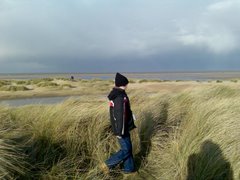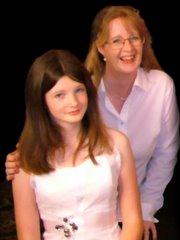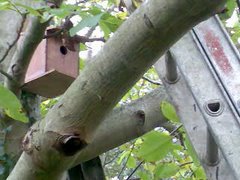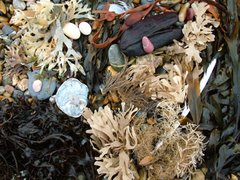
History at the Beach My Nephew has just started Home Education too and as I had a couple of days off work we took him along with our two to the beach to show him what fun it can be to learn. First stop was shopping though as we had all misplaced, outgrown or destroyed wellies and delighted the shopkeepers by asking for FIVE new pairs. On the beach at West Runton* were lots of rock pools. Wellies were soon topped by wet knees.
There was a vast amount of sea-weed, but little creature life. Perhaps it was because the tide was in and the life was more findable at low tide. However we soon looked back and realised how far we had travelled, so decided to walk back nearer the cliff for a bit of beach combing.
Amazingly we found the cliff* to have a vast array of layers from Mud, Sand and Clay* to chalk*, oily silt and peat. It was fascinating talking about how the Peat layer - which was low on the cliff - had once been forrest land (if you took a small part in your hand and crumbled it, you could still find the wood and leaves) to how all the layers above it had once been under the sea (evidence being thousands of shells embedded) to the sand layer many feet deep above it. To think also that the whole cliff that we looked up at had possibly once been under the sea or ice was astonishing.
The other thing I found fascinating was the numerous flints that were round, about 1 foot across or more, had a circular hole through the middle about 6" across and to me all appeared to be in a fairly straight line along the beach at set intervals as though set there on purpose. There were occasional others laying loosely, but half way along our journey, was an even more impressive stone ring that was double. The outer ring was in sections as though someone has flint crafted a number of pieces from the natural flint circles to create and outer ring set around the outside, making this one around 2 feet across. The center of each circle seemed to be full of naturally formed chalk. These and other glassy black flint, swirls and layers of clay mixed with chalk and another rock which appeared very rusty and molten like lumps of fossilised metal, all hinted towards volcanic style activity in a very distant era.
By the end of our walk, we had found between us - an amber coloured, crystaline fossil found in the chalk, a Belemnite. A Medieval Brooch very similar to the one above in the photo, a very worn wooden wheel, this had three bolt holes around a central hole and was probably off an old shipwreck. A flint with a crytaline surface and a flint knapped tool that was found just protruding from the forrest layer, which upon research looks like a "levallois point" although this looks like a practice or unfinished piece. (photo to follow soon).
This is just a hint of the fun we had, not to mention the exercise and the wonderful fresh sea air.
I hope kids, that you all enjoyed your day enough to write a reply about your favourite part.
*These photo links above are to the following site: http://www.west-runton.ukfossils.co.uk/West-Runton-Fossils-Geology/location-photos.htm




2 comments:
http://www.ukdfd.co.uk/ukdfddata/showrecords.php?product=6476&sort=1&cat=60
kay, just me and asa, he said he cant find the exact brooch anywhere on other sites, but some similar.
the web above is a records database, thought you may be interested
love penny
Thanks Penny.
Thanks to Asa too for looking. It's always good to see more options.
Love Kay
Post a Comment